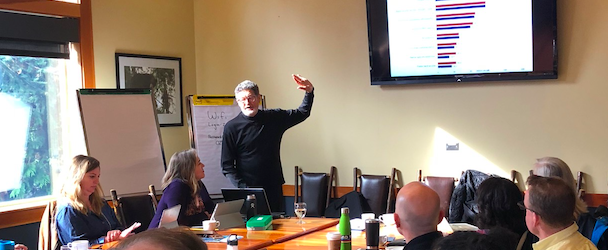In my 25 years in executive roles at cultural organizations, I’ve had to lead through challenging times. Based on my experience and now working with a research firm to guide these entities, here are four things to keep in mind.
Sign in to KYOB+
Never miss the latest read on industry data and analysis.
 I am thrilled to share this guest article by my fantastic colleague, Jim Hekkers. Jim served as the Managing Director of the Monterey Bay Aquarium for 15 years, and I am honored that he is now a partner in sharing trend data for cultural organizations. Jim served in...
I am thrilled to share this guest article by my fantastic colleague, Jim Hekkers. Jim served as the Managing Director of the Monterey Bay Aquarium for 15 years, and I am honored that he is now a partner in sharing trend data for cultural organizations. Jim served in...


